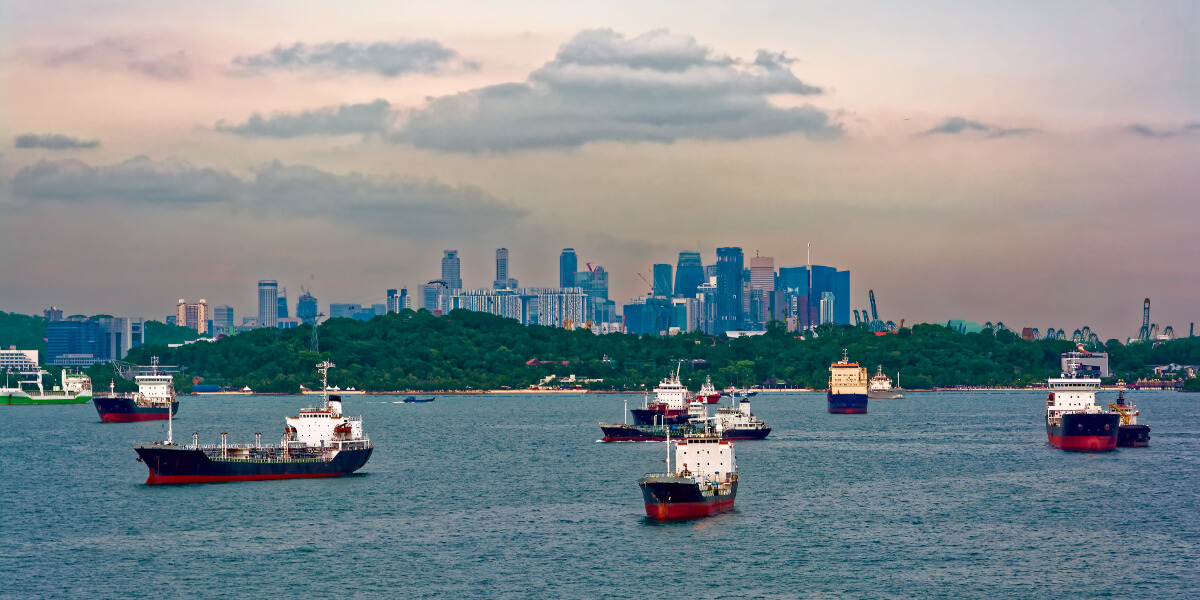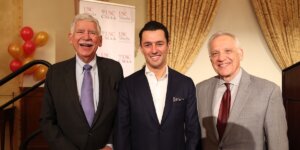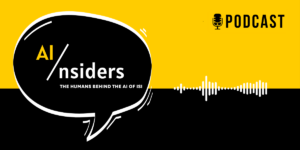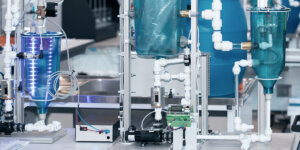
Cargo ships waiting in the harbor at the busiest port of Singapore. Photo/iStock
Even radar, navigation systems, GPS tracking and radio communications don’t prevent ships from colliding. In 2017, collisions and groundings made up nearly 40% of all marine accidents, and over half of the total casualties. These incidents were primarily caused by human error.
Researchers at USC Viterbi School of Engineering are attempting to remove, or at least minimize, the need for human decision in ship navigation. They are developing an automated system that instead relies on both data analytics and artificial intelligence.
“One main intention for autonomous ships is really for the safety purpose,” said Professor Yan Jin, member of the Department of Aerospace and Mechanical Engineering and project lead. “We’re all human and sometimes we make mistakes due to different situations. But if we have an autonomous kind of decision-making computer program, it would constantly make suggestions to humans.”
Knowing the locations of other ships and objects, their system can predict those ship’s movements and determine their best possible course of action that minimizes the chance of collision.
Mechanical engineering PhD student Xiongqing “Vincent” Liu was responsible for developing the AI portion of their system. Initially, he planned on using data on how ship captains drive and avoid collisions to train his system to replicate this behavior.
However, unable to get this data, he turned to another machine learning method called reinforcement learning. This method uses simulations of different boating scenarios to teach the computer how to achieve its goal of not hitting another object.
“At first the computer agent doesn’t know anything. It has to explore the simulated environment by itself,” Liu said. “If the agent collides with the obstacles, then it will receive a negative penalty. But if it reaches the goal, then it receives a very positive reward.”
After running the simulation thousands of times, the agent learns from its past experiences what trajectory to take to avoid a collision, similar to how a human learns.
“From this process, we can demonstrate that, as the agent trains itself, it can generate some intelligence. And this kind of intelligence is what humans use to make decisions – it’s kind of their intuition. And this kind of human intuition can be learned by a computer agent,” Liu said.
But the AI system alone is not fully error-proof. It relies on the scenarios Liu inputs, while major variations on them can cause confusion and lead to a dangerous trajectory. And even though Liu is working to extend the AI’s capabilities beyond these programmed scenarios to incorporate any and all possible situations that can occur, there will always be gaps in its knowledge.
The analytics model, developed by aerospace engineering PhD student Edwin Williams, helps fill some of these gaps. His system uses historical boating data going back over 20 years on past ship’s decisions and outcomes to predict what other vessels are going to do.
“You can imagine there’s an infinite number of trajectories that the vessel could take. But each one of those infinite trajectories has a certain probability of being taken,” Williams said.
“What my system does is looks at the entire probability of what those trajectories are and then determines the minimum likelihood of where the other vessel is going to be at any given time.”
This tells them which path has the lowest probability of a collision occurring. But the system relies solely on the quality and amount of data it has. The more specific the data is – say, what captain was driving the ship – the more accurate the prediction will be.

Liu’s AI (left) and Williams’ analytics model (right) maneuvering their ship (circled in purple) through a crowded waterway. Video/Monohakobi Technology Institute
In addition to helping to marine vessels, his work is in the beginning stages of being applied to air traffic control and space traffic management.
In simulations, his system has had a 100 percent success rate for avoiding marine collisions. But, just like the AI, it is limited by the scenarios provided by the data. By using the two systems together, they have an additional layer of security in case an unexpected situation occurs.
“From doing this research we realize that, when you have two kinds of systems, if they’re not consistent, then you need to advise,” said Jin.
“If there’s a person there, that’s great. If there is no person there, then you need to devise another approach or algorithm to really understand or resolve this discrepancy. Then, the decision after that resolution is a safer one.
They are now wrapping up a three-year grant funded by the Maritime Technology Division of the Monohakobi Technology Institute in Japan. In the summer, they will begin another three-year grant to continue their work and develop the system even further. By the end of that time, they plan on performing a full-scale test using the institute’s ship maneuver simulators.
Published on April 4th, 2019
Last updated on April 14th, 2021












